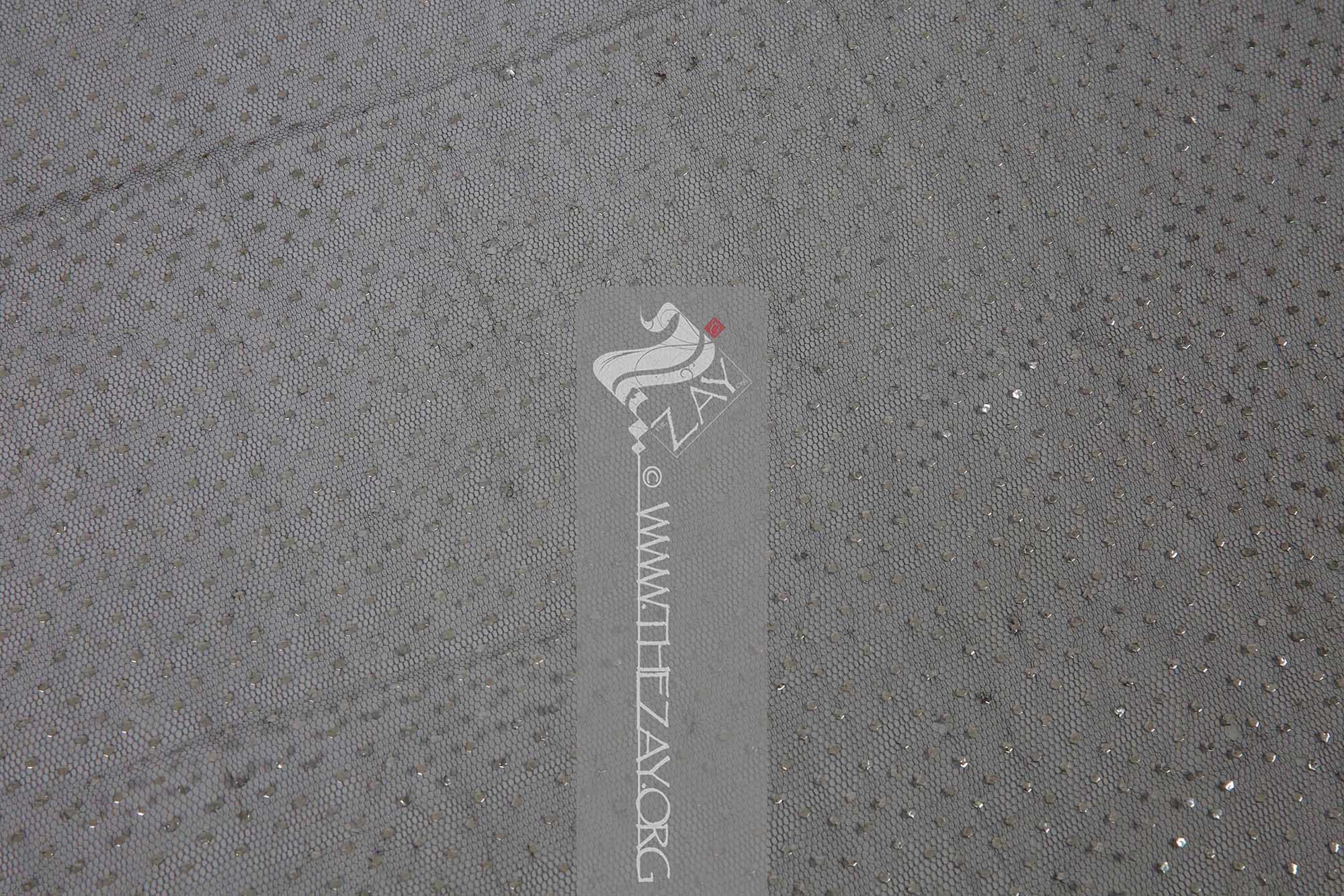Object Note
This rare silver veil was purchased from a dealer in Al Ain city (@alain_antiques). It was purchased together with another similar silver embellished veil (ZI2021.500970.9 UAE); four other veils (ZI2021.500970.10 UAE), (ZI2021.500970.11 UAE), (ZI2021.500970.12 UAE), (ZI2021.500970.13 UAE); two very rare dresses (ZI2021.500970.6 UAE) & (ZI2021.500970.7 UAE); and five overgarments (ZI2021.500970.1 UAE), (ZI2021.500970.2 UAE), (ZI2021.500970.3 UAE), (ZI2021.500970.4 UAE), (ZI2021.500970.5 UAE).
Object History
An antique dealer in the city of Al Ain, contacted Dr. Reem EL Mutwalli after spotting and following The Zay Initiative’s sister Instagram account: @sultanibookuae. He was able to broker the purchase of a number of items originally gifted from a member of the Al Nahyan ruling family to one of the ladies in their entourage, who insisted on staying anonymous, reflecting the rarity and high quality of these articles.
Object Features
This veil takes its name from the silver straw (khus) when applied in spotted form resembling coins (mnaghad). The base fabric of the veil (shaylah) is black silk tulle (tur).
The silver adornment was applied by hand directly to the fabric. Usually, the silver straw (khus), about 0.635 cm wide and 46 cm to 61 cm long, were threaded onto a flat, wide needle with a similarly flat, wide eye. The strips were then threaded into the mesh, crisscrossed, and flattened by applying pressure with fingernails. This method was also used to make the surrounding silver geometric shapes that represent stars. Once the whole design was finally completed the fabric was stamped down and passed through a roller, to flatten the metal even more.
Here a semi-dense 11 cm wide border design runs along with one of the longer edges of the veil, framing the wearer’s face when the article is worn. Divided into two bands forms; the outer 6 cm wide band is fashioned of rows of specks or dots (mnaghad) creating evenly intersecting lines in a diagonal trellis design of three squares each finished with a central dot (naghdah); followed by an inner 5 cm wide band in a line of repetitive paisley (kazuwah) motif. The remaining fabric is then embellished with evenly spaced pinprick dots (mnaghad).
The long edges of the veil are finished with selvages and the shorter cut edges are unfinished.
This type of veil was generally draped off the head covering the upper body from the back, it was then gathered and tucked on each fore arm to firmly frame the face with the shimmering silvery adornment. Such a veil (shaylah) was designed to be worn at celebrations and special occasions. If worn by a bride on her wedding night it was pulled down the forehead revealing only the silhouette of her face to the gazing female guests. The silver has tarnished slightly with age.
It is a physical example of the traditional arabic saying (zinah_wa_khazinah), meaning “beauty and wealth in one”. The silver embellishment (mnaghad) which decorated this veil was employed to show status and style but could also be melted down and sold in times of need.
Keywords: mnaghadah, talli, fadhah









